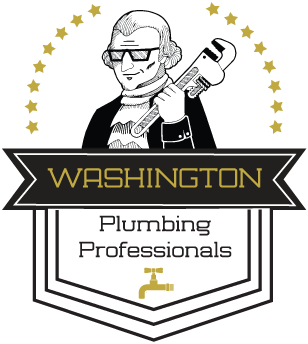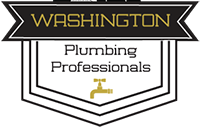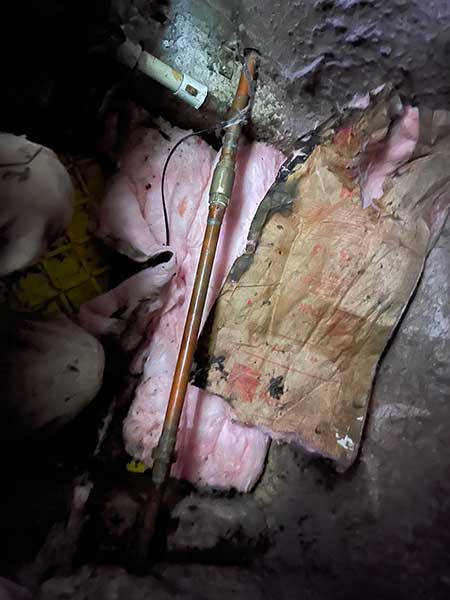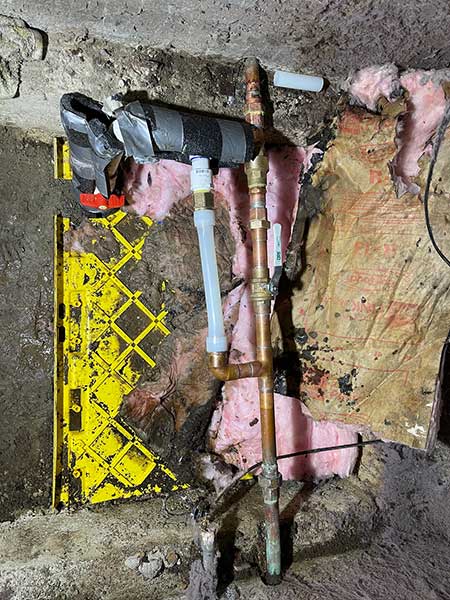What Makes A Water Main?
The term water main refers to the main water line servicing water from its supply to its demand, your home. The water supply can be from a well or from the meter off your city main line. Whichever way your home is supplied water, you want to ensure the line is not disrupted or you will not be receiving water to your home. To ensure protection of your water line it is important the correct material is used and installed correctly with the correct fittings. Improperly installing a water main meant for potable use can be serious including health risks for those who drink it, and the risk for contaminating the water is high.
Water mains can be of many different types of material. Copper, polyethylene, PVC, and galvanized iron are quite common to find used for water mains.
This is an example of a copper main line entering a home through the crawlspace with an irrigation connection prior to supplying the house. The check valve (left, above) had been found to be outside of proper operating specifications and required replacement. Installing the new check valve and adding unions for future ease of service (right) brought this system back into proper working order. Down stream of the irrigation connection is a double back-flow preventer to prevent contamination of the residence potable water supply.
Copper water mains, when properly protected and when using the correct type of copper, will last a very long time. The downside is copper pipe is the most expensive as far as material cost is concerned when considering the material for a new main.
PVC water mains are among the most likely to fail by breaking or freezing. They are the most brittle of water main options, and are easy to break if digging the ground around the main leading to a lot of headaches. It is also the cheapest option for a water main replacement. So if you need to plumb a new main and need it to be as low cost as possible, and you are aware of how fragile the main will be, PVC may be your material of choice. Many plumbing companies will refuse to install PVC mains because of how inferior it is to other available options.
Galvanized iron was a great functioning material used for many years. The downside is the descaling that occurs inside galvanized water pipes will eventually cause a complete blockage. The inside surface of the pipe will flake off and build up in smaller lines, then start building up in the larger piping. Once descaling starts, there is no stopping it and a plumber will be required to repipe the lines. Descaling also leads to more leaks and vastly increases the difficulty of the repair.
Poly, or Polyethylene, piping is among the best options for plumbing a completely new water main. Due to the available lengths, a 300 foot water main can be installed with a single uninterrupted pipe. Because there were no fittings used in the ground, poly piping significantly reduces the possibility of a leak. It is also a thick wall material resistant to the sharp edges of shovels, most yard equipment, and added weight from the ground above without breaking, kinking, or collapsing. Relatively speaking, Poly piping is among the most affordable as well. Overall, Poly piping is the best choice for a new or replacement water main when installed correctly by a professional plumber. Poly is also an excellent choice for installing a water line for a yard hydrant, provided a backflow device is installed, as the chance of contaminating the potable water for the home due to a break in the line is greatly lowered.



